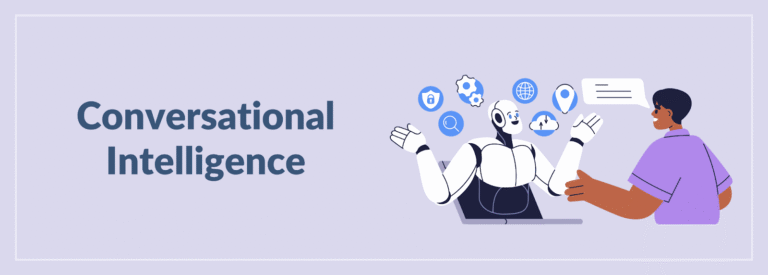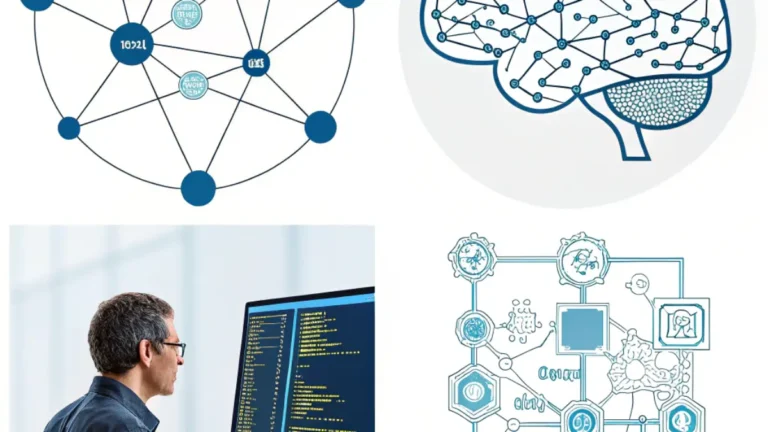
AI is changing industries. It automates decisions, improves processes, and solves problems. But its reliability depends on thorough testing. Unlike traditional software, AI learns from data. This makes its behavior unpredictable. Accuracy, fairness, and security become major concerns.
Testing AI is more than checking outputs. It examines how AI handles edge cases and adapts to new data. Consistency is also important. Poor testing can lead to biased results and security risks. It can cause failures in critical systems. That is why AI testing needs a structured approach. It must validate both performance and ethics.
This article covers key AI testing strategies. It explains how to define functionality and find possible failures. It also explores strong validation techniques.
Defining AI Functionality
AI must work as expected to be useful. Unlike traditional software, AI learns from data. It does not follow fixed rules. That is why clear objectives are important.
Understanding AI Functionality
AI should produce accurate and reliable results. It must follow ethical guidelines. This includes:
- Correctness: AI should generate precise outputs.
- Reliability: AI must work well in different conditions.
- Fairness: AI should not be biased.
- Security: AI should resist attacks or data changes.
Setting Clear AI Goals
AI objectives must be defined before testing. This includes:
- Setting accuracy benchmarks, like 95% for image recognition.
- Defining acceptable error limits.
- Ensuring ethical standards, such as fairness in hiring tools.
Handling AI’s Unpredictability
AI does not always behave as expected. It is important to classify its responses:
- Expected behavior: AI performs well within the trained data.
- Acceptable deviations: Small variations that do not affect results.
- Unexpected behavior: AI errors, biases, or incorrect outputs.
Measuring AI Performance
AI testing uses different metrics, such as:
- Precision & Recall: Ensuring AI detects relevant data.
- F1-Score: Balancing precision and recall.
- Confusion Matrix: Identifying false positives and negatives.
- Fairness Metrics: Checking for biased decisions.
Defining AI functionality early prevents errors. It helps create strong test cases. It also ensures AI delivers reliable results.
Understanding AI System Failures
AI processes data, finds patterns, and makes decisions. But it does not always work as expected. Unlike regular software, AI failures often come from data issues, training flaws, or real-world changes. These failures can cause incorrect predictions, biased results, or security risks. Understanding them helps ensure AI performs reliably.
When AI Does Not Work Correctly
AI fails when it produces inaccurate or unfair results. A hiring tool may favor certain groups due to biased data. An autonomous car may misidentify road hazards. In healthcare and finance, such failures can have serious effects.
Types of AI Failures
AI failures fall into three main types:
- Logical Failures: AI does not learn correct input-output relationships. A chatbot may misunderstand user intent. A fraud detection system may wrongly flag legitimate transactions.
- Ethical Failures: AI may show bias. Hiring platforms or credit scoring models might favor specific groups.
- Performance Failures: AI may struggle with real-world changes. A speech recognition system trained on standard accents might fail with regional dialects.
Common Causes of AI Failures
Several factors contribute to AI failures, including:
- Poor-Quality Data: AI inherits flaws from biased or incomplete training data.
- Overfitting & Underfitting: Overfitting happens when AI memorizes training data but fails on new inputs. Underfitting creates an oversimplified model.
- Data Drift: AI models degrade over time as real-world data changes. A recommendation system may become outdated as user preferences shift.
Why AI Failures Need Special Attention
AI failures are hard to detect and fix. Traditional bugs can be debugged, but AI errors stem from data complexities. Continuous monitoring, robust validation, and diverse testing help catch failures before they cause harm.
Understanding these issues helps organizations improve AI performance and prevent risks.
Testing AI for Expected Results
AI does not consistently provide expected responses. In contrast to standard software, it assimilates data and modifies itself. Evaluating AI involves evaluating if it delivers precise, unbiased, and dependable outcomes across various scenarios.
Creating Test Cases for AI
AI decisions change based on input. Test cases should check:
- Correctness: Does the AI give accurate results?
- Consistency: Does it respond the same way to similar inputs?
- Robustness: Can it handle unexpected inputs?
For example, a sentiment analysis AI should correctly classify positive, negative, and neutral statements.
Checking AI’s Decision Process
AI functions like a black box. Testing should include:
- Black-Box Testing: Checking input vs. output without seeing the internal process.
- White-Box Testing: Analyzing how the AI makes decisions.
- Model Explainability: Using tools like SHAP or LIME to understand AI behavior.
These methods ensure AI follows logical steps in decision-making.
Handling AI’s Changing Outputs
AI may not always give the same result for the same input. To test this:
- Multiple Iterations: Running the same test many times to check variations.
- Threshold-Based Validation: Setting acceptable output ranges.
- Baseline Comparisons: Comparing AI with simpler models.
For example, fraud detection AI might flag the same transaction differently. Testing helps confirm reliability.
Ensuring AI Works for Everyone
AI should perform well for different users and scenarios. Testing should include:
- Edge Cases: Checking rare or unusual inputs.
- Fairness Tests: Ensuring AI does not show bias.
- Stress Tests: Testing AI under heavy use.
A voice recognition AI, for example, should work across different accents and noise levels.
Ensuring AI Reliability
AI is used in healthcare, finance, and other fields. But its accuracy depends on training data and real-world conditions. Reliable AI should always give accurate and fair results, no matter the input.
Adapting AI for Different Uses
AI trained for one task may not work well in another. A fraud detection model for e-commerce might fail in banking. To improve reliability, AI should:
- Learn from diverse data that match real-world cases.
- Use transfer learning to adjust instead of starting from scratch.
- Be tested across software industries to check adaptability.
Handling Different Inputs
AI must process all kinds of inputs. It should:
- Work with incomplete or unclear data.
- Detect new patterns while staying consistent.
- Update itself with fresh data over time.
For example, chatbots should understand different ways users ask the same question.
Testing in Real-World Conditions
Lab tests are not enough. AI should go through:
- Field Testing: Running AI in real environments.
- Scenario Testing: Checking AI with unusual cases.
- Continuous Monitoring: Watching for changes in AI performance.
AI is changing software testing. Real device testing is important because apps behave differently on various devices and networks. It ensures accurate results but takes time. AI makes this process faster. It automates test execution and analysis. It finds patterns, predicts failures, and improves test coverage.
KaneAI: AI-Native Test Automation
KaneAI by LambdaTest is a GenAI-native testing agent that empowers teams to plan, author, and evolve tests using natural language. Built from the ground up for fast-paced quality engineering teams, KaneAI integrates seamlessly with LambdaTest’s broader platform, spanning test planning, execution, orchestration, and analysis.
As a powerful AI tool for developers, KaneAI simplifies the test automation process, whether you’re building from scratch or optimizing existing test suites.
Key Features:
- Effortlessly create and evolve test cases using natural language (NLP-based instructions).
- Convert high-level objectives into fully automated test steps—no manual scripting needed.
- Export your tests in all major coding languages and automation frameworks.
- Write complex conditions, flows, and assertions using plain language.
- Easily test backend APIs and boost coverage alongside your UI tests.
KaneAI simplifies test automation for teams of all skill levels, making it easier for developers and QA teams to build reliable test suites faster.
Ensuring Fairness and Ethics
AI must be both accurate and fair. To achieve this, it should:
- Remove bias by using diverse data.
- Be transparent so users understand decisions.
- Follow legal rules like GDPR for data protection.
For instance, AI used in hiring should not unfairly favor certain groups.
Preventing AI Failures
AI should not cause harm. Fail-safe features should include:
- Human reviews for AI decisions.
- Confidence scores to limit incorrect answers.
- Backup systems that take over when AI is unreliable.
Reliable AI improves safety, fairness, and trust across industries.
AI Testing Stability and Performance
AI-powered testing tools must deliver stable and consistent results across environments. Unlike traditional methods, AI learns from past tests, analyzes patterns, and adapts over time.
Monitoring Test Output Consistency
AI testing tools use predictive models to classify results. However, inconsistencies can occur due to:
- Changes in dataset labeling (e.g., marking an issue as a bug in one test but ignoring it in another).
- Bias in training data affects classifications.
- Environmental factors influencing execution.
To minimize inconsistencies, teams should continuously monitor test output stability. AI predictions should also be validated against manually verified baselines.
Detecting Instability in AI Testing
AI models can degrade due to outdated training data, software updates, or environment changes. Key issues include:
- False positives: Flagging non-issues.
- False negatives: Missing actual defects.
- Fluctuating results: Inconsistent test outcomes.
Regular validation against past reports helps maintain accuracy.
AI Model Degradation and Regression Testing
AI testing declines over time due to:
- Outdated data: Older snapshots fail with new UI changes.
- Frequent updates: Software changes impact AI predictions.
- Overfitting: AI struggles with new cases.
Regression testing prevents AI updates from breaking functionality by:
- Comparing past and current results.
- Running A/B tests on model versions.
- Automating output checks in CI/CD pipelines.
Identifying Data Drift and Model Drift in AI Testing
AI-based tools can lose accuracy over time due to changes in test data or software environments. This can lead to unreliable test results.
Recognizing Data Drift
Data drift happens when input data changes, making AI predictions less reliable. Causes include:
- UI updates: Older AI models may not recognize new layouts.
- New defect patterns: AI may fail to detect new bugs.
- Environment shifts: Browser or OS updates can affect test results.
To handle data drift, teams must retrain AI models using updated datasets.
Managing Model Drift
Model drift occurs when the relationship between inputs and outputs changes. This can cause:
- Inconsistent defect detection: AI misses defects it once found.
- Unexpected classification shifts: Previously failing tests suddenly passing.
- Unpredictable test execution: AI behaving inconsistently over time.
To manage this, teams should:
- Continuously monitor AI performance.
- Retrain models with new defect data.
- Use manual validation as a feedback loop.
By tracking and addressing drift, AI-based testing remains accurate and reliable. This ensures consistent results across different releases and test environments.
Conclusion
Testing AI systems ensures reliability, stability, and accuracy. AI models evolve over time, unlike traditional software. Regular validation is necessary to maintain performance.
Consistency in predictions helps prevent unreliable results. Detecting performance issues early keeps AI models accurate. Regression testing ensures past functionality remains intact.
Structured AI testing prevents unexpected failures. It improves software quality and reliability. Addressing data and model drift helps maintain accuracy.
A continuous feedback loop is essential for AI stability. Manual oversight and automated checks work together. Adaptive testing keeps AI effective as data and environments change.






